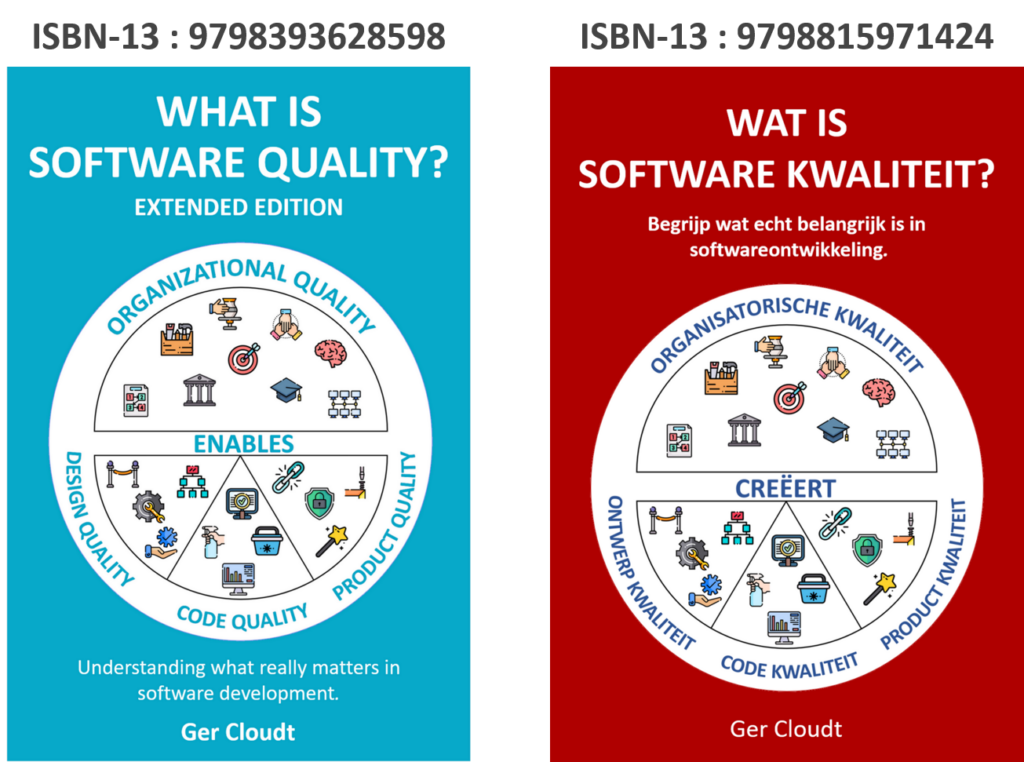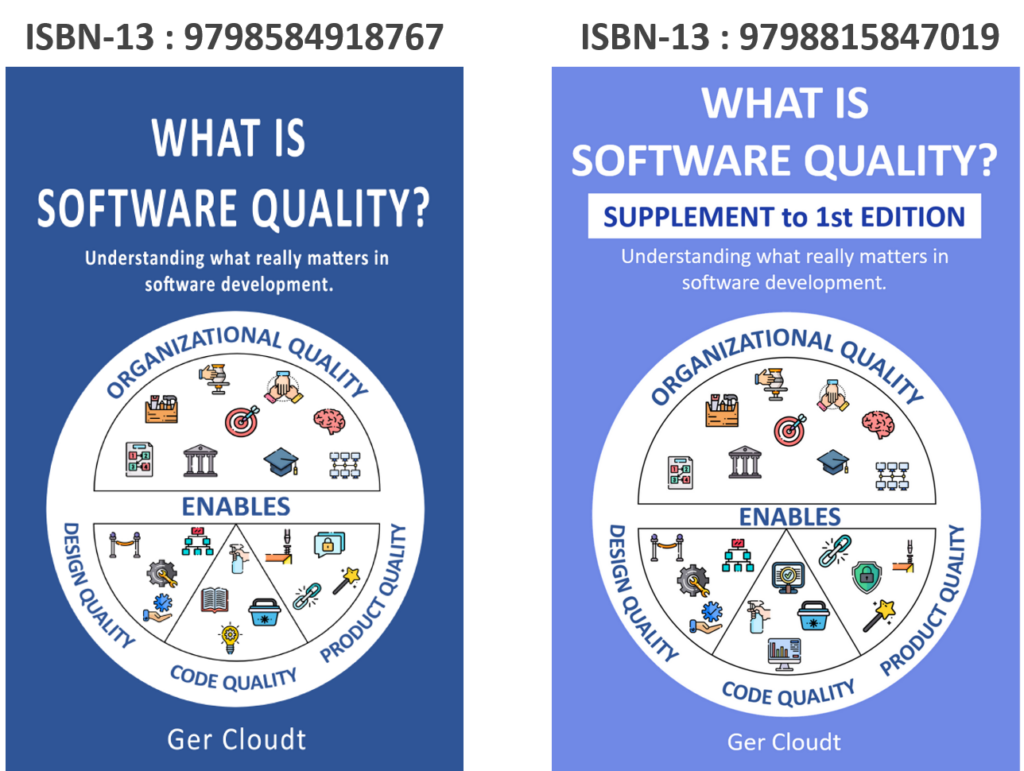
The book “What is Software Quality?” can be purchased as paperback in the Netherlands, Germany and Belgium via the online shop. For other countries it is available on Amazon market places on which the Extended Edition and the Dutch Edition are also available as KINDLE e-book. For purchasing high amounts of the book you can contact the author via the contact form on this web-site.
It is available in English and Dutch:
Check it out in the online shop.
To get a better impression about the content of the book a link to the Table of Contents and Introduction out of the book is provided.
What-is-Software-Quality-Extended-Edition-ToC-and-Introduction
Additionally, the Table of Contents (Inhoudsopgave) of the Dutch version “Wat is Software Kwaliteit?” is added as well:
Wat-is-Software-Kwaliteit-Inhoudsopgave-en-Introductie
Both the Extended Edition and the Dutch Edition contain the content of the 1st Edition and the Supplement.
Still, the 1st Edition and its Supplement are available as well, only as paperback:
What is Software Quality?
This book has been written during the COVID-19 crisis we all suffered in 2020, a pandemic induced by the SARS-CoV-2 virus. It was imperative to mitigate contamination to the maximum extent possible by keeping distance and maintaining high levels of hygiene. Besides being warned not to shake hands anymore, people were asked to work from home office as much as possible. Inexorably, working from home highly relied on IT, which, in turn, highly relied on software running the internet.
I myself was working at Bosch heading a software development group, where 90% of the engineers suddenly started to work from home. Luckily enough, things went smoothly, whereas equipment was taken home and based on a reliable networking infrastructure. As a result, engineers could continue to work. Some of them were needed in the office to support our big test systems, containing hundreds of devices, but the majority could seamlessly work from home, remotely accessing the code repository, the build machines and test systems, while simultaneously using Skype and Teams for communication and collaboration purposes. All of this powered by software. In particular, it was during this period that I once again realized how much we, as a society, depend on software….
Software is becoming increasingly important in our lives. Just cast your glance everywhere where software is available and you will conclude that software indeed runs (make that rules) the world.
A proper look at your close environment will convince you that software is ubiquitous. Your smartphone is run by software, your computer is run by software, your vacuum cleaner is run by software, your television is run by software, your car is run by software. Can you imagine any device that is not influenced by software in some shape and form?
Then, if you have a look at society, you will conclude that even more is run by software. Financial systems are run by software, the internet is run by software, public transportation is run by software, air traffic control is run by software. Let’s face it, software runs the world. Imagine a world that is bereft of software and you will struggle to make sense of the world we live in.
On August 20, 2011, The Wall Street Journal published an article of Marc Andreessen titled Why software is eating the world. In this article, Andreessen describes the growing importance of software worldwide, to the point of changing business models and destroying complete industries. The influence of software on our businesses is, to put it mildly, huge!
Due to this increasing influence of software, companies are starting to realize that digitalization is not only a fact, but also a necessity. Companies need to transform into software companies and upscale their investment into software. For its irrefutably prominent role in all aspects of our lives, the quality of software is paramount.
When reading books and articles about quality assurance in software, I often get the impression that quality in software is only about testing. Well, in my humble opinion, it is not; software quality is much more than testing. Testing is a necessity because we are not able to produce error-free software. This book provides a holistic view on software quality. In addition to addressing testing to achieve quality, it also looks into internal software quality and even what enables quality. This book aims to give an overall picture on what matters in software development and why, without going into the pedantic details, which are described much better in other books, like the ones mentioned in the bibliography.

